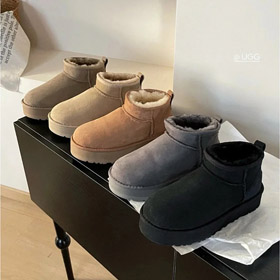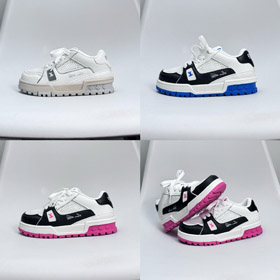Dior: A Legacy of Elegance, Innovation, and Timeless Glamour
2025-04-14
Dior: A Legacy of Elegance, Innovation, and Timeless Glamour
In the annals of fashion history, Christian Dior stands as a visionary who redefined post - war elegance and established a house synonymous with sophistication, creativity, and cultural relevance. Since its founding in 1946, Dior has been a pillar of high fashion, blending meticulous craftsmanship with bold artistic vision to create iconic designs that transcend eras. From the revolutionary "New Look" to modern feminist statements on the runway, Dior continues to shape the global fashion landscape while honoring its heritage of timeless glamour.
The Inception: Christian Dior's Vision of Renewal
Christian Dior launched his eponymous brand in Paris on December 16, 1946, against the backdrop of post - World War II austerity. Dior, a former art gallery owner with a deep appreciation for feminine beauty, aimed to revive optimism and luxury through fashion. His debut collection in 1947, famously called the "New Look" by journalist Carmel Snow, was a radical departure from the boxy, utilitarian styles of the war years. The collection featured cinched waists, full skirts, and padded hips, crafted from luxurious fabrics like silk, taffeta, and velvet—materials that symbolized post - war abundance.
The "Bar Suit," with its structured jacket and voluminous skirt, became the centerpiece of the New Look, embodying Dior's belief that fashion should celebrate the female form. This collection not only revitalized the French fashion industry but also set a new standard for elegance, making Dior a household name overnight. By 1950, Dior had expanded globally, opening boutiques in major cities and dressing Hollywood stars like Marilyn Monroe and Grace Kelly, solidifying its status as a luxury powerhouse.
Design Philosophy: Where Art Meets Fashion
Dior's design philosophy is rooted in a harmonious blend of architectural precision and artistic expression. Christian Dior himself viewed clothing as a form of sculpture, once stating, "I have designed dresses to make women more beautiful." This ethos of enhancing natural beauty through innovative 剪裁 (tailoring) and luxurious materials has been maintained through generations of creative directors, each bringing their unique perspective while honoring the house's core values.
The House of Codes
Several iconic elements define Dior's aesthetic:
- The Cannage Pattern: Inspired by the cane chairs in Dior's Parisian atelier, this diamond - quilted motif adorns everything from handbags to clothing, symbolizing the brand's commitment to timeless craftsmanship.
- The Dior Rose: A recurring symbol of femininity and elegance, the rose appears in embroidery, prints, and accessories, paying homage to Dior's love for his family garden in Granville, France.
- Color and Texture: Dior masterfully uses color to evoke emotion, from the soft pastels of the New Look era to the bold neons of modern collections. Textures like lace, embroidery, and sequins are employed to add depth and luxury.
Creative Directors: Guardians of the Legacy
After Christian Dior's sudden passing in 1957, a series of visionary designers have steered the brand:
- Yves Saint Laurent (1957 - 1960): At just 21, Saint Laurent continued Dior's legacy with the "Trapeze" collection, introducing a youthful, modern silhouette while maintaining the house's elegance.
- John Galliano (1996 - 2011): Known for his theatrical, eclectic designs, Galliano merged historical references with avant - garde concepts, such as the iconic "Diorissimo" monogram and collaborations with artists like John Paul Gaultier.
- Raf Simons (2012 - 2015): Simons brought a minimalist, architectural approach, emphasizing clean lines and modern femininity, as seen in his "New Look" reinterpretations with laser - cut fabrics.
- Maria Grazia Chiuri (2016 - present): The first female creative director, Chiuri infuses Dior with feminist narratives and cultural diversity, using slogans like "We Should All Be Feminists" and incorporating artisanal techniques from around the world.
Iconic Creations: Symbols of Dior's Excellence
The Lady Dior Handbag
Launched in 1995 and named after Princess Diana, the Lady Dior is a paragon of understated luxury. Crafted from Cannage - quilted leather with signature metal "D - I - O - R" charms, the bag has evolved from a royal accessory to a modern classic, carried by celebrities like Charlize Theron and Bella Hadid. Its timeless design and customizable finishes (including limited editions with artist collaborations) make it a symbol of heritage and refinement.
Dior Couture
Dior's haute couture collections are a showcase of unparalleled craftsmanship. Each gown, often taking hundreds of hours to create, features intricate beadwork, hand - embroidered details, and innovative silhouettes. The 2023 春夏高级定制系列 (Spring - Summer 2023 Haute Couture Collection), for example, merged Roman architectural motifs with delicate lace, demonstrating Chiuri's ability to blend history with contemporary artistry.
Fragrances and Beauty
Dior's influence extends to the beauty industry with iconic fragrances like:
- Miss Dior (1947): A floral scent created for Christian Dior's sister, Catherine, it embodies the romance and elegance of the New Look era.
- J'adore (1999): A sensual, floral - fruity fragrance fronted by Charlize Theron, symbolizing modern female empowerment.
The Dior Beauty line also includes luxury skincare (such as the Prestige line) and makeup, known for its high - quality formulas and sophisticated packaging.
Cultural Impact and Global Reach
Dior's influence transcends fashion, impacting art, film, and popular culture:
- Film and Fashion: Dior costumes have graced iconic films like Funny FaceThe Great Gatsby
- Celebrities and Royalty: From Audrey Hepburn to Rihanna, Dior has dressed some of the world's most influential figures. Princess Diana's association with the Lady Dior bag and Meghan Markle's choice of Dior for royal engagements highlight the brand's enduring appeal across generations.
- Retail and Legacy: The flagship store at 30 Avenue Montaigne in Paris, inaugurated in 1946, remains a temple of luxury, while global boutiques in cities like New York, Tokyo, and Shanghai offer immersive experiences reflecting Dior's aesthetic.
The Future: Innovation with Heritage
Under Maria Grazia Chiuri, Dior has embraced sustainability and inclusivity:
- Sustainable Luxury: The brand uses eco - friendly materials like recycled cashmere and organic cotton, while its "Dior Circular" initiative promotes upcycling and reducing waste.
- Feminist Narratives: Chiuri's collections often feature feminist messages, such as the "Women's Rights Are Human Rights" tee and collaborations with female artists, reflecting a modern understanding of luxury that values purpose alongside beauty.
Dior's ability to balance tradition with innovation ensures its relevance in a rapidly changing world. Whether through a haute couture gown that takes months to craft or a streetwear - inspired sneaker with Cannage detailing, the brand continues to prove that true luxury lies in the fusion of heritage, creativity, and timeless elegance.
In conclusion, Dior is more than a fashion house; it is a cultural institution that has shaped the way we perceive beauty, femininity, and sophistication. From Christian Dior's post - war dream of renewal to today's commitment to modern values, Dior remains a symbol of elegance that transcends time and trends. To explore a curated selection of luxury and fashion items that embody artistry and innovation, visit https://hoobuy.art/, a platform dedicated to discovering exceptional pieces that blend design excellence with cultural significance.



















